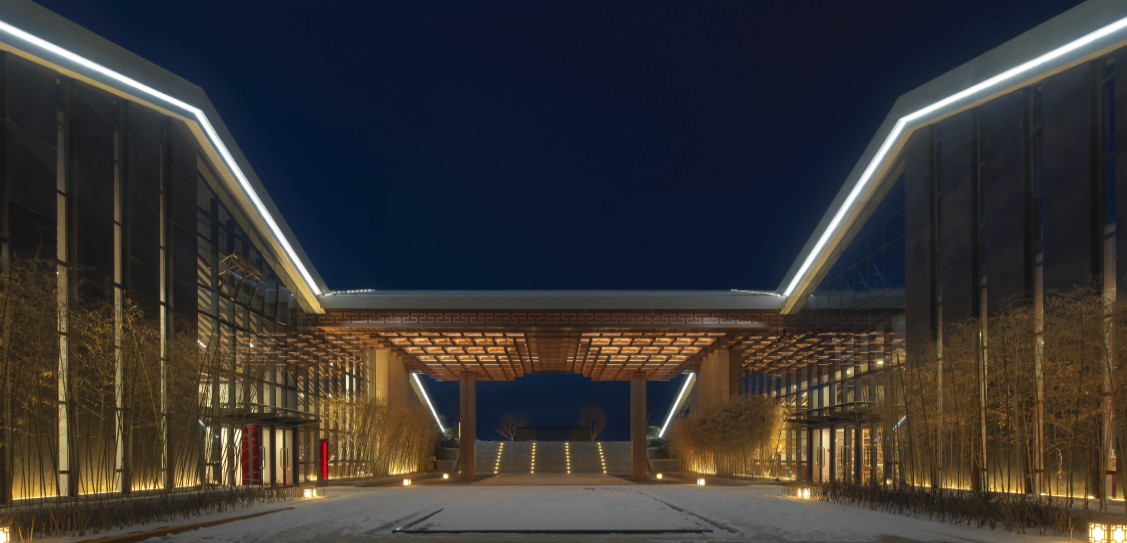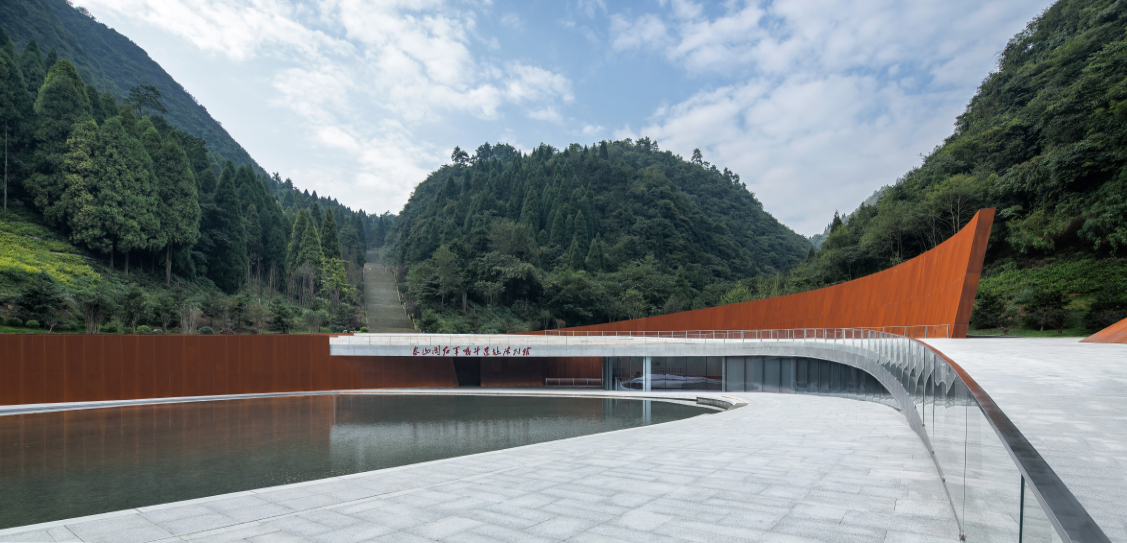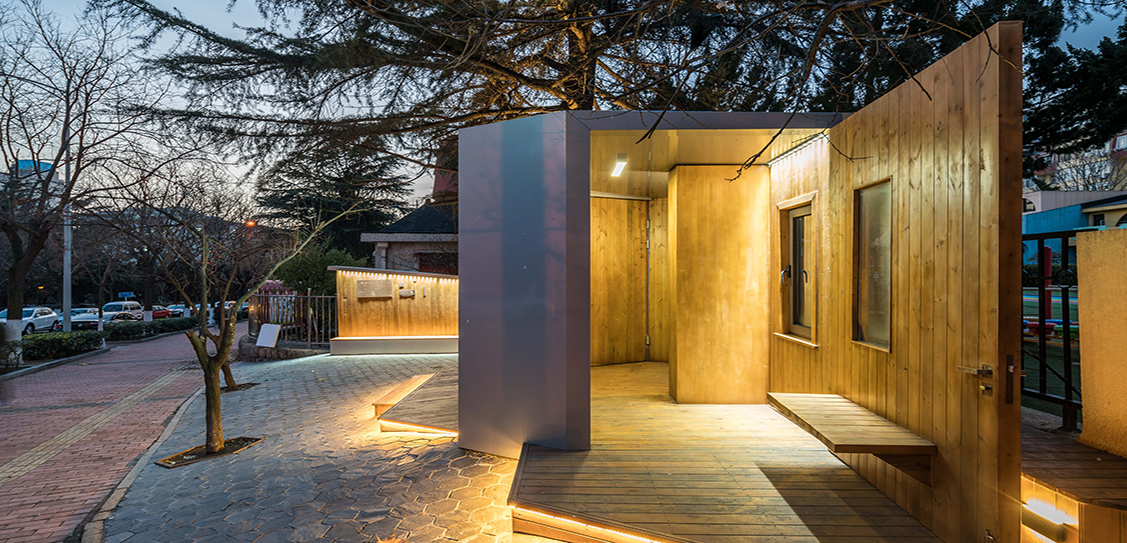Yan’an Learning Academy has emerged as a landmark of Yan’an New Area favored by the public.The design intends to establish an ecologically self-recycling system, through the application of fish scale pit planting, decomposed sheep dung and ferrous sulfate to improve soil quality, preventing soil consolidation and enhancing fertilizer efficiency. Architectural Design & Research Institute of Tsinghua University Co.,Ltd designed a rainwater storage system for secondary utilization, avoiding soil erosion and loess collapse, and employed intelligent water-saving irrigation for a low-cost maintenance of plants. By applying the semi-subsidence layout commonly seen in traditional kilns houses, the building can adapt to the locally strong sunshine and bitter north wind. Meanwhile, the building is integrated into the environment through the undulating roofs and see-through courtyards.
The design concept of The Site Museum of Loushanguan Battle draws on conceptual art ideas, explores the possibility and logic of interpreting historical events with minimalist and abstract architectural vocabulary, and respects the natural attributes of the site. The main function of the building is placed underground, with two curved surfaces; vertical retaining wall and horizontal ramps, forming a set of exhibition spaces around the sunken courtyards. Through the "rigid" intersection between the initial texture of the material and the volume, the building expresses the hardships and cruelty of warfare, and creating a literary mood. Architectural details continue the principles of abstract construction, drawing on local traditional materials and construction methods.
One of the most iconic buildings in Yinzhou District - Ningbo Yinzhou Civic Center is located in the core area of eastern Ningbo, China. With 7 floors above ground and 2 floors underground, the building height is 36.45 meters. The total floor area is 32,935 square meters. The project includes the administrative service center (including public services), the public trading center, the public affairs handling center, the agency center, a conference center, and a centralized archive center. The estimated staff amount is about 550 and daily visitor amount will be around 3000. Aside from the functionality, the building will be serving as the government’s external image. The design approach is to create modern and minimal building forms that express the sense of solemnity within the program.
Due to extensive mining, the Swedish city of Kiruna faced the challenge of moving its entire city center three kilometers east. Kiruna's relocation includes moving its historical city center, with homes, shops, offices, schools and hospitals. The rounded Kiruna city hall marks the start of the new center and stands as a symbol of democracy and fellowship. "Krystallen," as it is called, houses public functions, as well as exhibition facilities, meeting rooms, workshops, the municipal council chamber, and offices. Krystallen is a town hall for the community as well as a landmark for Kiruna, visible from far distances. The city hall consists of two building volumes. The inner building is shaped like a crystal, inspired by the great deposits of iron ore in the region. The outer building floats like a ring around the crystal, protecting it against the region's climate. The round shape of the new city hall also creates a better indoor and outdoor micro-climate. It allows 17% more daylight to penetrate the city hall.
WE SHARE Micro-Nest, the rest station for sanitation workers covers an area of about 81.5 square meters, with a building area of 7.87 square meters and a building height of 2.85 meters. The purpose of this design is to explore the possibility of interaction between social groups, and to make efficient use of public resources from the perspective of environmental protection and energy conservation. Taking this as a starting point, designers put forward the idea of using time-sharing, with a cube as the parent body, two pieces of maintenance door panels can be opened to the inside and outside, providing a space for the sanitation workers and urban residents to develop in a time-division manner. When sanitation workers need to use the building, the building can provide a relatively closed and private space for rest. When sanitation workers are working, buildings can provide more social places for citizens as urban furniture.
To see more amazing entries from this year’s WAN Awards please click here.



